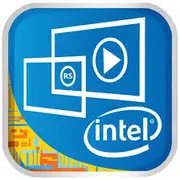Intel Core m3-6Y30

인텔 코어 m3-6Y30: 모바일 작업을 위한 컴팩트한 파워
2015년 프로세서를 2025년의 맥락에서 분석하기
아키텍처와 공정: 초경량의 기본 요소
2015년에 출시된 인텔 코어 m3-6Y30 프로세서는 울트라북과 하이브리드 장치에 중점을 둔 라인의 일부분이 되었습니다. 14nm 공정으로 제작된 스카이레이크 아키텍처는 성능 손실 없이 에너지 소비를 줄일 수 있게 해주었습니다.
- 코어와 스레드: 하이퍼 스레딩 덕분에 2개의 코어와 4개의 스레드를 제공합니다. 기본 클럭은 900MHz이며, 터보 모드 최대 클럭은 2.2GHz입니다.
- 통합 그래픽: 24개의 실행 유닛과 850MHz까지의 클럭을 가진 인텔 HD 그래픽스 515. DisplayPort 및 HDMI를 통한 4K 지원.
- 특징: 이 칩은 수동 냉각에 최적화되어 있어 두께가 9mm까지 줄어들고 소음이 줄어듭니다. AVX2 지침 지원은 미디어 콘텐츠 처리 성능을 향상시킵니다.
비록 시간이 지났지만, 2025년에도 이러한 프로세서는 예산 친화적인 울트라북에서 여전히 발견되며, 원시 성능보다는 배터리 수명이 중요시됩니다.
전력 소모 및 TDP: 파워와 효율성의 균형
TDP 4.5W는 코어 m3-6Y30의 핵심 특징입니다. 이를 통해 팬이 없는 노트북이 제작될 수 있었으며, 예를 들어 Microsoft Surface Pro 4와 같은 제품군이 탄생했습니다.
- 열 관리: 부하가 걸릴 때 칩은 잠시 7W까지 소비하지만, 빠르게 기본 값으로 돌아가 과열을 방지합니다.
- 동시대 제품과 비교: 2015년의 유사 모델인 AMD A6-8500P (15W)는 에너지 효율성에서 뒤처졌지만 다중 스레드 작업에서는 더 나은 성능을 보였습니다.
2025년 기준으로 TDP 4.5W는 보통 수준이며 (신형 인텔 코어 울트라 U 시리즈는 TDP 9~15W), 기본 작업에는 충분합니다.
성능: 2025년에 코어 m3-6Y30이 할 수 있는 일은 무엇인가?
현대 요구사항을 기준으로 평가할 때:
- 오피스 작업: 웹 브라우저(10개 이상 탭), Google Docs 또는 Microsoft 365에서의 작업은 처리할 수 있으나, Zoom을 동시에 실행할 때 간헐적인 지연이 발생할 수 있습니다.
- 멀티미디어: 4K 비디오(YouTube, Netflix) 시청이 지연 없이 가능하며, Lightroom에서의 사진 편집은 기본적인 수정만 가능합니다.
- 게임: CS:GO에서 낮은 설정으로 25-30 FPS, Minecraft에서 40-45 FPS. 최신 AAA 프로젝트(사이버펑크 2077, 스타필드)는 실행할 수 없습니다.
- 터보 부스트: 터보 모드에서는 2.2GHz로 클럭이 상승하지만 10-15초만 유지됩니다. 예를 들어, 무거운 PDF를 빠르게 열거나 애플리케이션을 실행할 때 유용합니다.
Geekbench 6 (693/1364)은 이 칩이 2025년의 예산형 프로세서인 인텔 N100 (1100/3200)보다도 성능이 떨어짐을 보여줍니다. 하지만 웹 서핑이나 텍스트 작업에는 충분합니다.
사용 시나리오: 이 프로세서는 누구에게 적합한가?
1. 학생들: 강의, 레포트 작성 및 강의 시청을 위한 용도.
2. 사무직 종사자: 이메일, 스프레드시트, 프레젠테이션 작업.
3. 여행자들: 1kg 이하의 가벼운 노트북(예: ASUS ZenBook UX305)으로 8~10시간의 배터리 수명 제공.
부적합: 게이머, 비디오 편집자, CAD 작업을 하는 엔지니어.
배터리 수명: TDP 4.5W가 작업 시간에 미치는 영향은?
코어 m3-6Y30을 탑재한 노트북은 35–45Wh의 배터리를 장착하여:
- 웹 서핑 시 (밝기 50%, Wi-Fi 사용) 10~12시간 작동.
- 비디오 시청 시 6~8시간 작동.
전력 절약 기술:
- Speed Shift: 지연을 줄이기 위한 동적 클럭 관리.
- C 상태: 사용하지 않는 코어를 "대기 모드"로 전환.
2025년에는 예산형 프로세서(예: Qualcomm Snapdragon 8cx Gen 3)가 20시간 이상의 배터리 수명을 제공하지만, 코어 m3-6Y30 기반 장치는 여전히 저렴한 가격 덕분에 주목받고 있습니다.
경쟁 제품과 비교: 누가 더 강했나?
- 인텔 코어 i5-7200U (2016): 2 코어/4 스레드, TDP 15W, Geekbench 6 ~900/1800. 더 강력하지만 액티브 쿨링이 필요합니다.
- AMD A9-9410 (2016): 2 코어, TDP 15W, Radeon R5 그래픽. 게임에서 더 나은 성능을 보이지만 배터리 수명이 30% 더 낮습니다.
- 애플 M1 (2020): 아키텍처가 다르기 때문에 비교가 적절치 않지만 M1은 5~7배 더 빠릅니다.
결론: 코어 m3-6Y30은 4.5W 클래스에서 최적의 선택이었지만, 2025년에는 인텔 알더 레이크-Y(2022)와 비교해도 구식입니다.
장단점: 2025년에 구입할 가치가 있을까?
장점:
- 조용한 운영(팬 없음).
- 저렴한 가격: $400부터 시작하는 노트북(신형, 예: Chuwi Minibook X).
- Windows 11 지원(TPM 2.0 필요하지만, 일부 모델에는 포함되어 있음).
단점:
- 멀티태스킹에 약함.
- Wi-Fi 6 또는 Thunderbolt 4 지원 없음.
- 업그레이드 제한: RAM과 SSD는 자주 스oldered 되어 있음.
노트북 선택에 대한 권장 사항
1. 장치 유형: 울트라북(Dell XPS 12), 변환형(레노버 요가 710).
2. 메모리: 최소 8GB RAM 및 256GB SSD.
3. 화면: 해상도 1920×1080의 IPS 패널.
4. 포트: 충전을 지원하는 USB-C, 프로젝터용 HDMI.
2025년 모델 예시:
- HP Pavilion 11 x360: $550, 8GB/256GB, 터치 스크린.
- ASUS VivoBook Flip 14: $500, 12시간 배터리.
결론: 코어 m3-6Y30은 누구에게 적합한가?
이 프로세서는 다음과 같은 사용자에게 적합합니다:
- 최대한 가볍고 조용한 노트북을 찾는 사람.
- "무거운" 애플리케이션을 실행할 계획이 없는 사람.
- 예산이 제한된 사람($400–$600).
주요 이점: 배터리 수명, 휴대성, 가격. 하지만 2025년에는 이를 임시 솔루션으로 보거나 여행용 보조 장치로 고려하는 것이 좋습니다. 진지한 작업을 위해서는 인텔 코어 울트라 5 125U 또는 애플 M3 프로세서를 고려해보는 것이 좋습니다.
기초적인
CPU 사양
메모리 사양
GPU 사양
여러 가지 잡다한
벤치마크
다른 CPU와 비교
소셜 미디어에서 공유하기
또는 링크로 소개하기
<a href="https://cputronic.com/ko/cpu/intel-core-m3-6y30" target="_blank">Intel Core m3-6Y30</a>